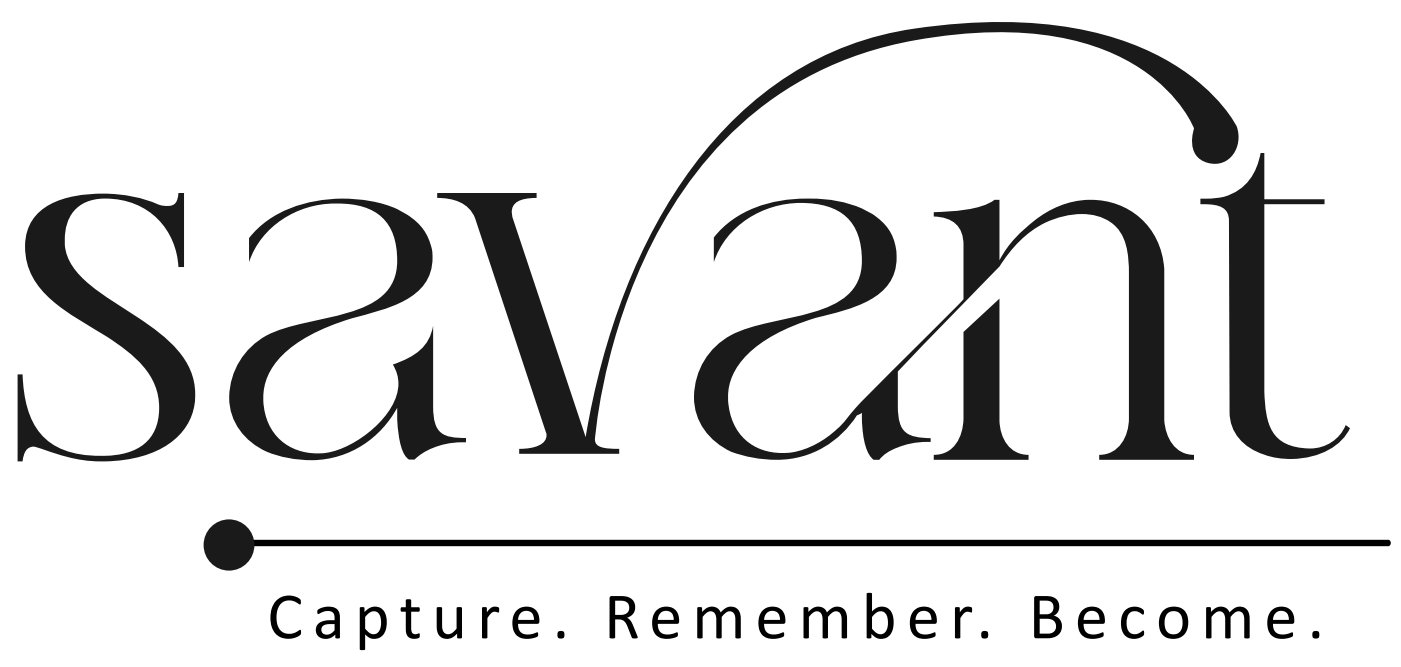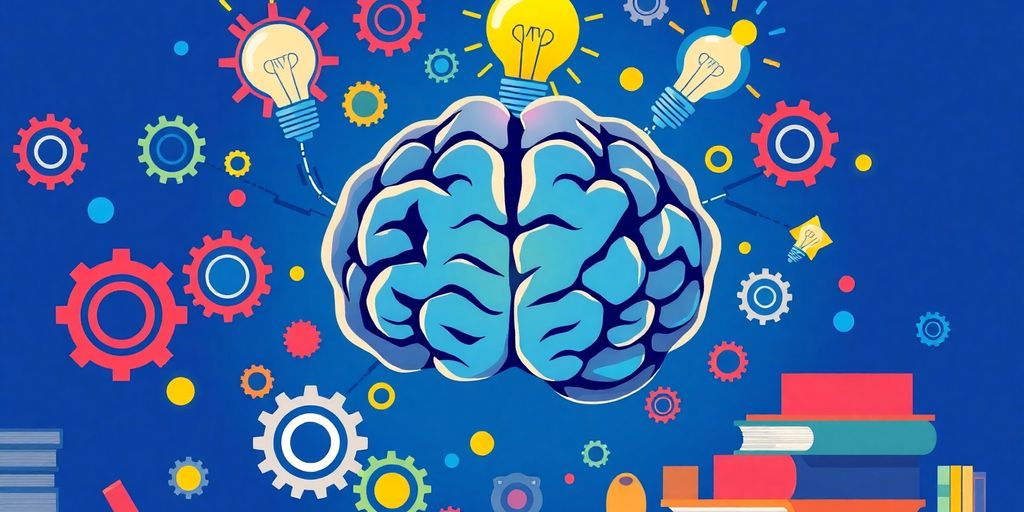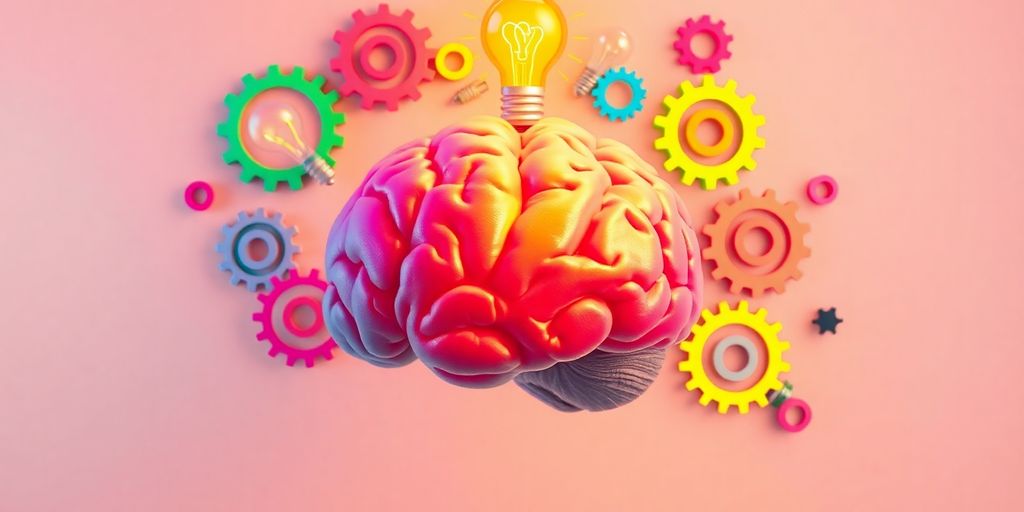In 2025, learning is taking a new turn with brain-based strategies. These methods are all about understanding how our brains work to make learning more effective. From using tech in classrooms to tapping into the power of emotions, educators are finding fresh ways to help students succeed. Let’s dive into some key takeaways from these innovative approaches.
Key Takeaways
- Brain-based strategies focus on how the brain learns naturally, making education more effective.
- Emotions play a big role in learning, helping students engage better with the material.
- Using multiple senses during lessons can improve memory and understanding.
- Technology, like apps and interactive tools, can make learning more engaging.
- Personalized learning approaches can cater to individual student needs, enhancing learning outcomes.
Embracing Neuroplasticity for Lifelong Learning
Understanding the Brain’s Ability to Change
Neuroplasticity is like a superpower our brains have, allowing them to adapt and change throughout our lives. This means that learning new things or improving skills isn’t just for the young. Our brains can form new connections at any age, which is pretty awesome when you think about it. Imagine your brain as a flexible roadmap, constantly updating routes to make sure you get to your destination efficiently. This adaptability is what makes lifelong learning possible.
Techniques to Enhance Neuroplasticity
So, how do you boost this brain flexibility? Here are some simple yet effective ways:
- Stay Curious: Always be on the lookout for new things to learn. Whether it’s a new language or a hobby, keeping your mind active is key.
- Mix It Up: Don’t stick to one routine. Challenge your brain by doing things differently, like using your non-dominant hand for daily tasks.
- Mindful Practice: Regularly practice skills you want to improve, but do it mindfully. Focus on what you’re doing, and try to understand the process.
Real-Life Success Stories
There are countless stories of people who have harnessed the power of neuroplasticity to achieve incredible feats. Take, for instance, adults who’ve learned to play musical instruments later in life or those who’ve picked up entirely new careers. These success stories show that with determination and the right approach, our brains can adapt to almost anything.
Embracing neuroplasticity is like opening a door to endless possibilities. It’s about realizing that our brains are designed to grow and change, no matter our age. This mindset not only supports lifelong learning but also empowers us to tackle new challenges with confidence.
Creating Engaging Learning Environments
The Role of Emotions in Learning
Emotions are a big deal when it comes to learning. They can either open up or shut down the brain’s ability to absorb new information. When students feel happy and relaxed, they’re more likely to engage and remember what they learn. Imagine a classroom where laughter and curiosity are part of the lesson plan. That’s the power of emotions in education. It’s not just about getting the facts right; it’s about connecting with the material on a human level.
Designing Interactive Classrooms
Creating an interactive classroom isn’t just about throwing in some tech gadgets. It’s about designing a space where students feel comfortable and eager to participate. Think flexible seating, colorful walls, and areas for group work. The key is to make the environment adaptable to different activities and learning styles. Here’s a quick list to get started:
- Flexible Seating: Allows students to choose their preferred learning spot.
- Colorful Walls: Use colors to stimulate creativity and focus.
- Group Work Areas: Designate spaces for collaboration and discussion.
Incorporating Technology for Better Engagement
Incorporating technology into the classroom can transform the way students learn. It’s not just about having computers or tablets; it’s about using them to create engaging and interactive lessons. Here are some ways to do it:
- Gamified Learning: Turn lessons into games to boost motivation.
- Interactive Quizzes: Use apps to make quizzes more engaging.
- Virtual Field Trips: Use VR to take students on virtual journeys.
When technology is used thoughtfully, it can turn a dull lesson into an exciting adventure. The goal is to make learning an experience, not just a task.
Incorporating these ideas can make a huge difference in how students interact with their learning environment. By focusing on emotions, interactive spaces, and the smart use of tech, classrooms can become places where students are not just taught but inspired to learn.
Harnessing the Power of Multisensory Learning

Why Multisensory Approaches Work
Ever tried learning something new and felt like it just didn’t stick? Well, using multiple senses can help with that. When you mix visual, auditory, and kinesthetic methods, you’re giving your brain more ways to connect with the material. Think of it like this: when you’re learning a language, you might listen to audio, speak the words out loud, and write them down. This approach makes the information more memorable.
Examples of Multisensory Techniques
Multisensory learning strategies utilize various senses to enhance comprehension and retention, particularly benefiting visual thinkers across different subjects. By engaging different senses, you create a richer learning experience, which can lead to better retention and understanding. It’s like giving your brain a workout from all angles.
Want to put this into practice? Here are a few simple ways:
- Read and Listen: When tackling a new book, try listening to the audiobook version as well. This dual approach can help reinforce the material.
- Draw It Out: If you’re studying something complex, draw diagrams or mind maps. Visual aids can simplify tough concepts.
- Get Hands-On: Whenever possible, involve a physical element in your learning. Whether it’s building a model or using flashcards, doing something physical can make a big difference.
Multisensory learning isn’t just about using more senses—it’s about making learning more engaging and effective. By combining different methods, you’re not just memorizing information; you’re truly understanding it.
Benefits for Different Learning Styles
Multisensory approaches cater to various learning styles, making education more inclusive. Whether you’re a visual learner who loves diagrams, an auditory learner who benefits from lectures, or a kinesthetic learner who thrives with hands-on activities, this method has something for everyone. By incorporating multisensory techniques, educators can reach a broader audience and improve learning outcomes for all students.
Incorporating multisensory learning approaches is one of the key trends in preschool language education for 2025, offering a dynamic and engaging way to enhance learning experiences.
The Future of Brain-Based Strategies in Education
Predicted Trends for 2025
Looking ahead, brain-based learning is set to become even more integrated into classrooms. First off, expect more schools to jump on this bandwagon as studies continue to show how effective these methods are. Neuroplasticity, or the brain’s ability to reshape itself, is going to be a big player. It helps students overcome learning hurdles by literally changing how their brains work. Plus, education will start to focus more on the whole student, not just their academic skills, but their emotional and social abilities too.
Innovations in Educational Technology
In 2025, technology is not just a tool, but a partner in learning. AI is teaming up with neuroscience to create personalized learning experiences. Imagine a classroom where lessons adapt in real-time based on each student’s brain activity. This is not just sci-fi anymore, it’s happening! Educational apps and tools are getting smarter, using data to tailor lessons to each student’s needs. This means more engaging and effective learning experiences.
Global Impact and Adoption
Brain-based learning isn’t just a fad; it’s going global. Countries all over are adopting these strategies to improve their education systems. This approach is bridging educational gaps, giving all students, no matter where they’re from, a fair shot at success. As more nations embrace these methods, we’re seeing a shift in how education is delivered, making it more inclusive and effective for everyone.
Brain-based learning is not just a passing trend; it’s the future of education. By understanding and leveraging how our brains work, we’re paving the way for a more inclusive and effective learning environment for all students.
Building Resilience Through Brain-Based Strategies
Fostering a Growth Mindset
Building resilience starts with nurturing a growth mindset. It’s about teaching students that their brains can change and grow with effort and practice. This mindset encourages them to see challenges as opportunities rather than obstacles. By understanding neuroplasticity, students learn that their abilities aren’t fixed. They can improve and adapt, which is a powerful motivator for tackling difficult tasks.
Developing Problem-Solving Skills
Problem-solving is at the heart of resilience. When students engage in activities that require critical thinking, they learn to navigate complex problems. This skill is crucial for bouncing back from setbacks. Consider incorporating puzzles, strategy games, or real-world scenarios that require students to think critically and develop solutions. These activities not only enhance cognitive skills but also build confidence in their ability to overcome challenges.
The Importance of Supportive Feedback
Feedback plays a significant role in resilience. Constructive, timely feedback helps students understand their mistakes and learn from them. It’s important to provide feedback that focuses on the process rather than just the outcome. This approach encourages students to keep trying and not fear failure. Supportive feedback fosters a safe learning environment where students feel comfortable taking risks and learning from their experiences.
Resilience isn’t just about bouncing back; it’s about growing stronger with each challenge. By integrating brain-based strategies into education, we equip students with the tools they need to thrive in an ever-changing world.
Incorporating these strategies into the classroom can significantly enhance student resilience, preparing them for the uncertainties of the future. Regular exercise, mindfulness, and spending time in nature are also effective practices for enhancing resilience, enabling individuals to better manage uncertainty.
Collaborative Learning: A Brain-Based Approach
The Science Behind Collaboration
Collaborative learning is more than just a buzzword; it’s grounded in the way our brains are wired to work. Humans are inherently social creatures, and our brains thrive on interaction. When we work together, we activate parts of the brain associated with empathy, problem-solving, and creativity. This isn’t just theory—studies have shown that group learning can lead to better retention and understanding.
- Empathy and Social Brain Activation: Working with others stimulates brain areas related to empathy, helping us understand different perspectives.
- Problem-solving Skills: Collaboration encourages us to think critically and come up with solutions as a team.
- Creativity Boost: Sharing ideas in a group can lead to innovative thinking and new insights.
By engaging in collaborative tasks, students can experience a deeper level of learning that taps into the brain’s natural tendencies.
Strategies for Effective Group Work
Getting the most out of group work involves more than just putting students in a room together. Here are some practical strategies:
- Define Clear Roles: Assign roles to each group member to ensure accountability and focus.
- Set Goals: Establish clear, achievable objectives for the group to work towards.
- Foster Open Communication: Encourage honest and respectful dialogue to facilitate idea sharing.
These strategies can transform group work from a chaotic experience into a structured, productive learning environment.
Tools to Facilitate Collaboration
Incorporating the right tools can make all the difference in collaborative learning. Here are a few that can enhance the experience:
- Digital Platforms: Tools like Google Docs or Microsoft Teams allow real-time collaboration and sharing of resources.
- Interactive Whiteboards: These can be used for brainstorming and organizing ideas visually.
- Project Management Software: Apps like Trello help keep track of tasks and deadlines.
By utilizing these tools, educators can create a more dynamic and interactive learning environment that supports collaborative efforts. The combination of technology and teamwork not only makes learning more engaging but also prepares students for real-world scenarios where collaboration is key.
Personalized Learning with Brain-Based Techniques
Adapting to Individual Learning Styles
Here’s the thing, not everyone learns the same way. Some folks are visual learners, others are more into listening, and some need to get hands-on. Personalized learning is all about recognizing these differences. By tailoring education to fit individual learning styles, we can make learning more effective and enjoyable. Imagine a classroom where lessons are as unique as the students themselves. Teachers can use different strategies like visual aids, storytelling, or interactive activities to cater to each student’s strengths.
Using Data to Tailor Education
Data is like the secret sauce for personalizing education. With tech tools, teachers can track how students are doing and adjust lessons on the fly. This isn’t about just grades; it’s about looking at how students engage with the material. Are they breezing through quizzes or struggling with certain topics? With this info, teachers can tweak their methods to better suit each student. It’s like having a GPS for learning—guiding students on their own unique paths.
Success Stories from Personalized Learning
There are some amazing stories out there about how personalized learning has made a difference. One school used data-driven insights to help their students excel in math. They noticed some kids were falling behind, so they introduced a mix of visual and interactive lessons. The result? Test scores went up, and students were more engaged. Another example is a language class that used personalized apps to help students learn at their own pace. The flexibility allowed students to master the language without feeling rushed.
Personalized learning isn’t just a trend; it’s a way to make education more inclusive and effective. By focusing on individual needs, we can help every student reach their potential.
Overcoming Challenges in Implementing Brain-Based Strategies
Addressing Common Misconceptions
Brain-based learning sounds pretty cool, right? But not everyone’s on board. Some folks are skeptical, thinking it’s just another educational fad. The key is to clear up misconceptions. Start by explaining the science behind it. Share stories of how it’s helped students. Show how it’s not just about fancy brain scans but real-world results. Sometimes people just need to see it to believe it.
Training Educators Effectively
Teachers are at the heart of this approach. But they need the right tools and training. It’s not enough to just hand them a book and say, "Go figure it out." They need workshops, ongoing support, and a community to bounce ideas off.
- Host regular training sessions.
- Provide access to online courses.
- Encourage collaboration among teachers.
Measuring Success and Impact
So, you’ve rolled out some brain-based strategies. How do you know if they’re working? Measuring success can be tricky, but it’s doable. Keep an eye on student engagement and feedback. Look for improvements in test scores and classroom behavior. Use surveys to get a sense of how students feel about their learning experience.
Investing in teacher training on neuroscience is not just beneficial; it’s a game-changer for education. By understanding how students learn, teachers can create more effective and engaging learning environments. This approach not only empowers educators but also enhances the overall learning experience for students, paving the way for a brighter educational future.
Conclusion
So, here we are, looking at the future of learning with a fresh perspective. It’s pretty exciting, right? By tapping into how our brains work, we’re not just teaching facts but creating experiences that stick. Imagine classrooms buzzing with energy, where students are not just learning but loving it. With these brain-based strategies, we’re not just preparing students for tests but for life. It’s about making learning fun, engaging, and, most importantly, effective. Let’s keep pushing the boundaries and see where this journey takes us. The future of education is bright, and it’s just getting started. Let’s embrace it and make the most of it!
Frequently Asked Questions
What is brain-based learning?
Brain-based learning is a way of teaching that uses what we know about how the brain works to help students learn better. It focuses on how students learn best and helps teachers create lessons that fit those needs.
How does neuroscience help in education?
Neuroscience helps teachers understand how the brain learns. This can lead to better teaching methods. By knowing how students think and remember, teachers can design lessons that work better for their students.
What are some effective brain-based learning techniques?
Some good techniques include using different senses in lessons, breaking information into smaller parts, and using games to make learning fun.
Can technology improve brain-based learning?
Yes! Technology like educational apps and tools can support brain-based learning by making lessons more interactive and engaging. They can also help teachers track student progress.
What are some common myths about brain-based learning?
One common myth is that people only use 10% of their brains. Understanding the science can help clear up these misunderstandings.
How can teachers learn more about neuroscience?
Teachers can take workshops, read books, or join online courses to learn more about neuroscience and how it can help improve their teaching strategies.






